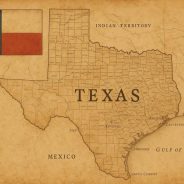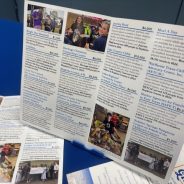Texas Data Center Boom Looks to Natural Gas For Power
October 15, 2025 – Texas’ data center boom is pushing the state closer to new natural gas generation as the only fast, reliable way to meet unprecedented power demand`s. With AI compute farms and hyperscale server hubs sprouting up across the state, industry and grid operators are raising concerns about whether existing electricity infrastructure can keep up.
Many data center developers are already opting to build their own gas-fired power plants on campus, rather than wait years for grid interconnections. These plants can ramp up instantly and offer a predictable supply—advantages that wind, solar, or batteries often can’t match for heavy continuous loads. Some new projects claim they will rely heavily on renewables, but for now, most are leaning into gas to avoid delays and stability risks.
The shift raises important questions about Texas’ energy trajectory. For years, the state has celebrated its growth in wind and solar, but the rise of data centers is tilting the balance toward fossil fuels in the near term. The state’s energy planning is being tested: Can grid upgrades, transmission expansion, and cleaner technologies keep pace with both industrial demand and decarbonization goals?
If Texas is going to remain a top destination for data infrastructure, policymakers and industry must work hand in glove to coordinate power supply, streamline permitting, and invest in technology that can bridge the gap between scale and sustainability. Without that, the race to build compute may drive a parallel race toward more gas generation—just to keep the lights on.

Abbott Announces $278 Million Loan for Freestone County Power Plant Ahead of Data Center Boom
October 15, 2025 – Governor Greg Abbott has announced a new Texas Energy Fund (TxEF) loan to support construction of a 460-megawatt natural gas power plant in Freestone County, part of Calpine Corporation’s new Pin Oak Creek Energy Center. The $278.3 million low-interest loan—covering 60% of the $464 million project—marks the fourth TxEF agreement since the program began earlier this year.
Set to begin operation before summer 2026, the plant will add critical dispatchable power to the Electric Reliability Council of Texas (ERCOT) grid. Governor Abbott said the investment will “keep prices affordable and ensure continued reliability for all Texans.” Public Utility Commission Chairman Thomas Gleeson noted that TxEF-backed projects have now brought nearly 1,800 MW of new generation online statewide, with more expected as 13 additional projects undergo review.
The facility, located near Calpine’s existing Freestone Energy Center, will serve the ERCOT North Load Zone, which includes the growing Dallas–Fort Worth metroplex. Calpine Executive Vice President Caleb Stephenson said the plant is designed to start within minutes—providing stability during peak demand periods.
Texas faces rising electricity consumption, driven in part by rapid data center expansion and new AI computing facilities that require constant high-power availability. ERCOT projects that demand could reach 218 gigawatts by 2031, making investments in fast-start natural gas plants increasingly vital.
The Texas Energy Fund, created by the Legislature and administered by the PUC, offers competitive low-interest loans to add new, reliable power to the state’s grid. As Texas continues to balance its economic and technological growth with grid stability, projects like Calpine’s Freestone County plant represent a key step in strengthening the state’s energy foundation for the future.

Ionic, Nscale Deal Highlights AI Growth as Texas Data Center Boom Accelerates
October 15, 2025 – A major lease agreement between Ionic Digital and Nscale is boosting Texas’s rising role in AI and high-performance computing (HPC) infrastructure. Under a contract announced in mid-October 2025, Nscale will lease the full 234-megawatt capacity of Ionic Digital’s Cedarvale facility in Ward County. The agreement is a 10-year, triple-net lease valued at about $2 billion, giving Ionic steady revenue while allowing it to monetize existing infrastructure rather than relying solely on Bitcoin mining.
Under the deal, Nscale will deploy approximately 104,000 NVIDIA GB300 GPUs to support Microsoft’s AI services. The site’s power load is expected to expand over time, with options for adding more capacity.
Wider Data Center Trend in Texas
This deal is only one example of rapidly growing data center investment across Texas. A few other recent highlights:
- In Shackleford County, Vantage Data Centers is planning a massive new AI-campus (called “Frontier”) spanning roughly 1,200 acres with a projected 1.4 gigawatt capacity.
- In San Antonio, Vantage is also building several large data centers on the city’s far West Side — a 432,800 sq. ft. facility planned for 96 MW capacity is expected to break ground in October 2025 and be completed by mid-2027.
- In Ector County (in the Permian Basin), the joint venture Texas Critical Data Centers (TCDC), led by New Era Energy & Digital and Sharon AI, is advancing a 250 MW AI/HPC campus, including infrastructure engineering, land acquisition, and behind-the-meter power planning.
Behind-the-meter (BTM) power planning involves designing and implementing on-site energy systems, such as solar panels, battery storage, or microgrids, to power a facility directly. This type of planning aims to reduce energy costs, improve reliability during outages, and increase energy independence by minimizing reliance on the traditional electric grid. Effective BTM planning includes assessing factors like available space, site conditions, local utility rate structures, and integrating these systems with an energy management system for optimization.
Implications and Challenges
With all this growth, Texas’s power grid and regulatory framework are coming under increased scrutiny. For example, ERCOT projects that peak electricity demand could approach 218 gigawatts by 2031, driven in large part by data centers among other large-load users.
There’s also growing conversation around sustainability: energy sourcing, cooling systems, and environmental permitting are rising in importance. Some companies are pursuing onsite power, behind-the-meter generation, and streamlined permits.
Texas is clearly in the center of a major shift toward AI infrastructure and data center expansion. The Ionic/Nscale lease is a signal that infrastructure owners are rethinking business models (from crypto mining to AI hosting), while broader projects indicate Texas will increasingly see compute power and energy demand rise—along with the challenge of balancing economic potential with sustainable practices.
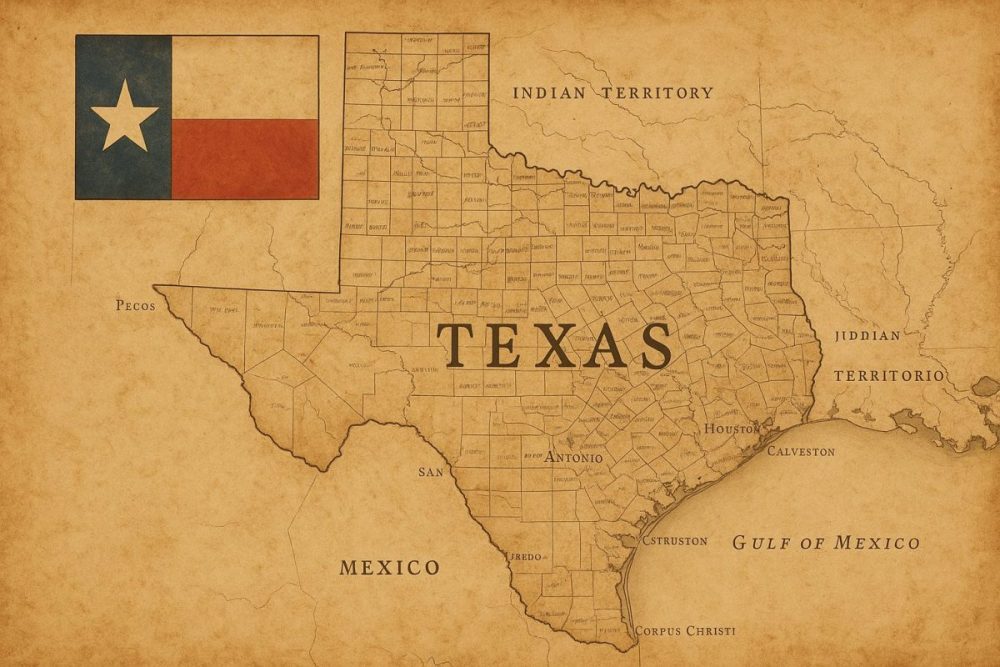
Target and Walmart Push Back on New Retail Theft Laws, Citing Self-Checkout Losses
October 14, 2025 – Large retailers including Target and Walmart are pushing back against a newly proposed law aimed at curbing retail theft by increasing oversight and regulation of self-checkout lanes. The proposed legislation would require stricter rules for self-checkout systems, including more staff monitoring, item caps, and possibly removing access to some kiosks altogether.
Retailers argue that while theft is a growing concern, self-checkout remains popular with customers as a convenience tool. They claim the law would raise operational costs and potentially lead to longer lines or reduced availability of self-checkout options.
The data supports some of their concerns: theft rates are significantly higher at self-checkout compared with traditional cashier-staffed lanes. Self-checkout shrinkage (losses due to theft or error) tends to average 3.5% to 4% of sales, while traditional checkouts typically lose less than 1%. Reports show many incidents involve “skip-scanning” (failing to scan items properly or intentionally) and mis-scanning — often mistakes or abuse by shoppers. Some studies estimate self-checkout sees up to four times more shrink than staffed lanes.
In response, Target has already begun implementing limits — for example, most of its stores now limit self-checkout to 10 items or fewer, paired with more staffed lanes for larger purchases. Walmart has selectively removed or reduced self-checkout kiosks in some locations experiencing high theft.
Supporters of the new law argue that stronger regulation is necessary to stop organized retail crime, which has exacerbated shrinkage across the industry. Opponents say that while theft must be addressed, the legislation should balance consumer convenience and cost. As the debate unfolds, both Target and Walmart are bracing for adjustments, both at the checkout and in lobbying efforts around the bill.

Attorney General Paxton Uncovers Illegal Activities by EPIC City Developers
October 14, 2025 – Attorney General Ken Paxton announced the identification of evidence that entities connected to the East Plano Islamic Center (“EPIC”) land development project violated federal and state securities laws and regulations. Attorney General Paxton has formally requested that the Texas State Securities Board (“TSSB”) immediately review the findings and refer the matter back to the Office of the Attorney General in order to file a lawsuit against those who broke the law.
“After a thorough investigation, it has become clear that the developers behind EPIC City flagrantly and undeniably violated the law,” said Attorney General Paxton. “The bad actors behind this illegal scheme must be held accountable for ignoring state and federal regulations. In accordance with state law, the TSSB should review our findings and refer this matter to me for further legal action.”
In March, Attorney General Ken Paxton announced an investigation into EPIC City. He then expanded the investigation and requested documents from local municipalities and other entities that may have coordinated with those involved in the unlawful development. This thorough investigation revealed that certain people and entities affiliated with EPIC City violated state and federal securities law.
In order to sue and hold the parties behind EPIC City accountable, the Office of the Attorney General must receive a referral from the Texas State Securities Board. Attorney General Paxton has invited Chairman E. Wally Kinney and Commissioner Travis J. Iles to examine the initial findings and corresponding evidence that demonstrates the EPIC City development project violated the law and subsequently refer the matter back to the Attorney General’s office for further legal action if the TSSB agrees with the office’s findings.

Data Center Water Use in Texas Remains Unclear Amid Limited Reporting
October 14, 2025 – State officials say Texas still does not have a clear picture of how much water its rapidly growing data center industry is consuming, raising concerns about resource management in one of the nation’s most drought-prone states.
A spokesperson for the Texas Water Development Board (TWDB) confirmed that the state lacks a comprehensive list of data centers, though estimates place the total between 350 and 400 facilities. In 2024, the agency sent about 70 surveys to data centers requesting monthly water-use data and supplier information. Only 18 companies responded.
While data centers are legally required to complete the TWDB survey, failure to do so carries a modest penalty—up to $500 per violation. The agency has not disclosed how many fines, if any, have been issued.
Data centers, essential to powering cloud computing and artificial intelligence, rely heavily on water for cooling. Many companies have adopted closed-loop cooling systems to reduce usage, but others cite proprietary technology and business confidentiality to withhold details about their operations.
With drought conditions frequently affecting Texas, accurate water data is vital for long-term planning and conservation. Without improved reporting, experts warn that state officials could be underestimating industrial demand in areas already facing tight water supplies.

Governor Abbott Honors Fentanyl Victims At 3rd Annual Fentanyl Awareness Walk In San Antonio
October 14, 2025 | San Antonio, Texas | Governor Greg Abbott yesterday honored the hard work of Texas families and community members raising awareness of the nationwide fentanyl crisis at the 3rd Annual “Soles 4 Souls” Fentanyl Awareness Walk.
“We will continue to grow this movement until we purge fentanyl forever in the United States of America,” said Governor Abbott. “There’s an unfortunate fact that we all must understand—there’s more work to be done. All I can ask is that you take the message you learned today and expand it tenfold around San Antonio, around Texas, making our city and our state an ever safer place.”
The Governor was joined at the annual walk by San Antonio Mayor Gina Ortiz-Jones, “Soles Walking 4 Souls” Directors Kathy Drago and Christina Villagrana, Bexar County Sheriff Javier Salazar, San Antonio Police Department Chief of Police William McManus, KSAT-TV News Anchor Courtney Friedman, and other fentanyl poisoning awareness advocates.
Since the Texas Legislature passed and the Governor signed into law House Bill 3144 in 2023, Governor Abbott has proclaimed every October as Fentanyl Poisoning Awareness Month to raise awareness and educate Texans about the dangers of fentanyl to save more lives. The Governor also issued a proclamation designating October 12-18, 2025, as Fentanyl Poisoning Awareness Week to teach Texas children about deadly fentanyl and live-saving lessons to protect their lives and their futures.
Earlier this year, Governor Abbott announced the launch of an online interactive map by the Texas Department of State Health Services (DSHS) that pinpoints where Texans can acquire for free or purchase life-saving Naloxone (NARCAN) as part of the statewide “One Pill Kills” campaign. This tool will help Texans locate over-the-counter NARCAN to prevent fentanyl poisonings and help save lives.
Since the launch of Texas’ “One Pill Kills” campaign, the state has seen a positive impact in the lives of Texans. New data published by DSHS on the Texas fentanyl data dashboard shows that fentanyl poisoning deaths from July 2024 through June 2025 decreased by more than 42% when compared with the previous 12 months. The decreases come after five straight years of increases, which saw fentanyl-related poisoning deaths in Texas rise over 600% from 2019 to 2023, taking the lives of more than 7,000 innocent Texans in just four years.
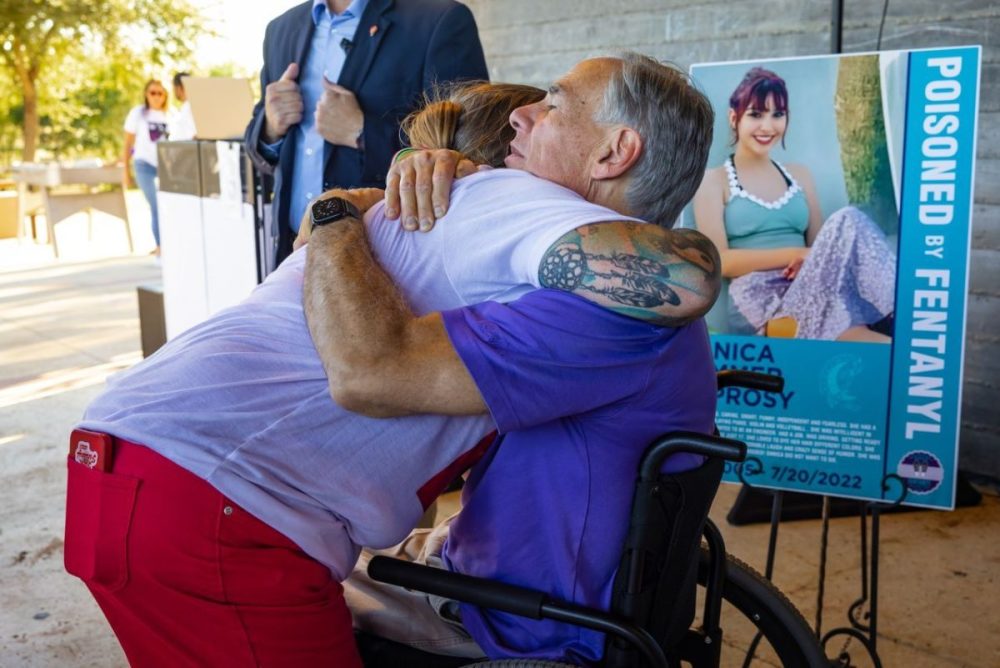
The Co-Chairs of the 2025-2026 Hopkins County United Way Dropped by for a Chat on This Second Cup Of Coffee
October 13, 2025 – The Co-Chairs of the 2025 Hopkins County United Way, Ashley Crump and Kaitlyn Hankins, sat down with John Mark Dempsey to chat about the United Way campaign on this episode of KSST’s A Second Cup Of Coffee With John Mark Dempsey. Learn how your local United Way is helping your community, see what’s new with them this year, and find out how you can help them out on this interesting episode of A Second Cup Of Coffee.

Halloween Candy Prices Seem Scary This Year
October 13, 2025 – Halloween candy is noticeably more expensive this year compared to 2024, driven largely by soaring cocoa and ingredient costs. The price of chocolate has more than doubled since early 2024, and the Consumer Price Index for candy and gum is up roughly 8 percent.
Retailers are passing these costs onto consumers, and shoppers may encounter “shrinkflation” — smaller bags or fewer pieces in familiar packaging at similar prices. Many manufacturers are also shifting emphasis toward less expensive non-chocolate sweets like gummies and licorice, which have smaller price bumps.
Is “fun size” is really all that ‘fun’? It’s subjective, as some people appreciate the convenience and portion control for a modest treat, while others find them disappointing because they are smaller and sometimes perceived as being of lower quality. The name itself is a marketing term, and the appeal often depends on individual preference, the specific candy, and the context of consumption.
In 2024, a 48-count box of full-size chocolate bars cost around $40, while this year similar boxes are selling for more than $50. Fun-size chocolate bags have also risen roughly $5 over last year.
To stretch Halloween budgets, many households are turning to alternatives. Bulk buys, generic or store-brand candy, and non-chocolate treats can be solid cost-saving options. Some plan to mix in more gummies, fruit chews, or novelty non-candy items. Others are shopping earlier to lock in lower prices before costs climb further.
This year, candy lovers may have to accept fewer chocolates or experiment with sweeter—but cheaper—alternatives in their Halloween hauls.
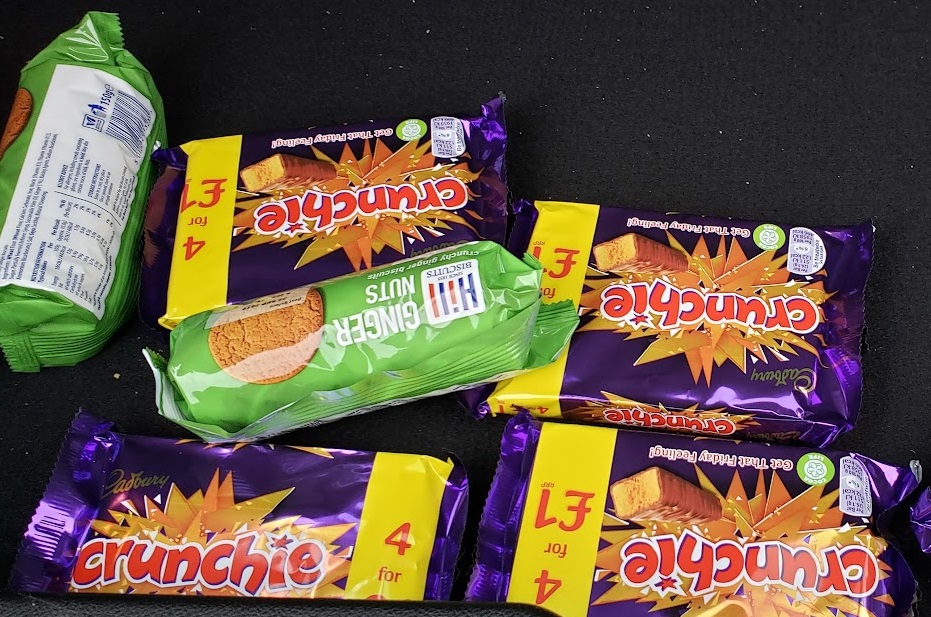
Sulphur Springs Wildcats Traveled to Celina, Texas, October 10th for Football Action
October 12, 2025 – The Sulphur Springs, Texas, High School Wildcats traveled to Celina, Texas, to play football with the Celina Bobcats on Friday, October 10th, 2025. Below is KSST’s coverage of this intense game. KSST’s Sports Director, John Mark Dempsey, called Play by Play, and Tony Flipping provided Color Commentary. Before the game started, four experts parachuted onto the football field. This was Celina’s Homecoming game. Be sure to check out this intense high school football game below.





